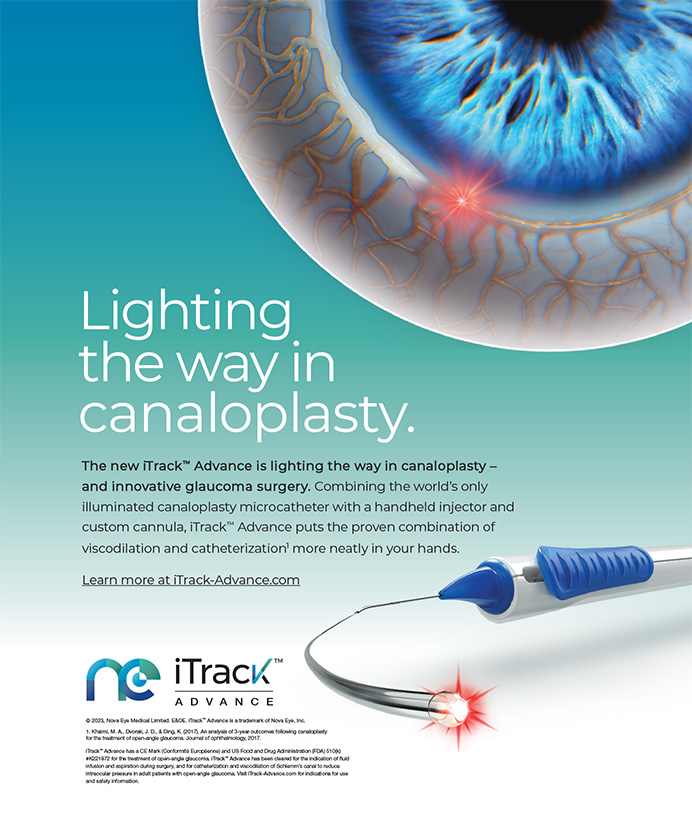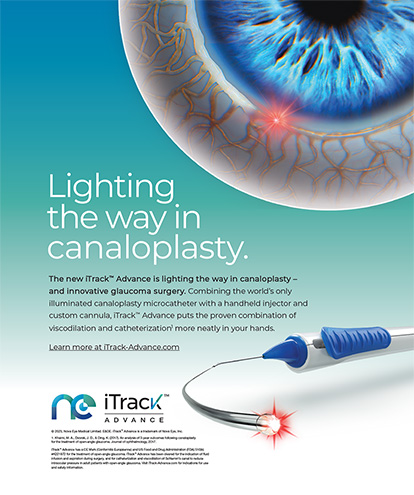You have developed a number of instruments over the years. What has been your inspiration?
To be honest, mostly I have just stumbled onto ideas. I usually start out looking for one thing and, in the process, bump into something else that turns out to be useful. For instance, while I was investigating the Erbium:YAG laser for cataract extraction, I had to separate irrigation and aspiration into two handpieces in order to work around the large diameter of the laser's fiber optic. Although the Erbium laser technology never developed as I had hoped, I came to recognize the advantages of bimanual I/A, and I have been using this approach with standard phacoemulsification ever since.
What motivated you to develop the Colvard pupillometer?
The idea of a simple handheld pupillometer occurred to me while I was still performing RK. Because this procedure used very small central optical zones, the size of the pupil often determined patients' satisfaction with the procedure. PRK and LASIK were initially performed with relatively small treatment zones as well, so the pupillometer became useful for evaluating candidates for these procedures.
Are you currently designing any new instruments?
I am working on several projects, but I am most excited about developing a new set of instruments for performing small-incision extracapsular cataract extraction (ECCE). As David F. Chang, MD, described in his 2009 ASCRS Binkhorst Lecture, ECCE is generally a better procedure than phacoemulsification for removing cataracts in developing countries. Unfortunately, most of the surgeons who wish to volunteer for humanitarian missions have little experience with ECCE. I want to develop instrumentation and techniques that will allow surgeons who primarily perform phacoemulsification to complete ECCE comfortably and successfully. I believe that we can do this by modifying phaco instruments and adapting phaco maneuvers for small-incision ECCE.
What do you enjoy most about performing cataract surgery in undeveloped countries?
As a volunteer with Surgical Eye Expedition International (SEE), I have had an opportunity to work with some wonderful physicians. My friend Jorge Rodriguez, MD, MPH, from Mexico once told me, "We must be generous with the gifts that God has given us." Ophthalmologists have an amazing gift—the almost magical ability to help blind people to see again. Not to share this special talent with others is to miss an opportunity of a lifetime. The World Health Organization estimates that more than 50 million people worldwide have UCVAs of 20/200 or worse due to cataracts. These folks need our help, and fortunately for them, we cataract surgeons love what we do. When I enter an eye camp, filled with hundreds of patients full of hope that they might see again, I feel like a kid showing up at an amusement park.
What is your most memorable surgical experience?
Several years ago, my daughter Megan and I were in Namibia. I was working with SEE International in a small village; Megan was working in the same area with the Namibian Red Cross. The Red Cross workers were traveling hut to hut in search of children orphaned by the AIDS epidemic. When Megan walked up to one little mud-walled and called out to see if anyone were home, an elderly woman answered, "No one here, only a blind person." Megan explained why she was visiting, and the woman began to cry. The blind woman said that all of her children had died and that, although she could not work or leave her house without assistance, she was trying her best to raise two small grandchildren.
Megan told the woman that her dad was an eye doctor from America, that I might be able to help, but that they must hurry. Megan and her fellow Red Cross workers bundled the woman and her grandchildren into their jeep and raced back to the village where I was working. Although it was the last day of our camp, and we had just taken down all of the equipment, I quickly examined the woman and determined that she was blind from cataracts. Within a few minutes, we had unpacked our surgical tools and successfully removed the woman's cataracts.
As we made our usual rounds the next day, we found Megan's friend dressed, sitting up straight as African women do, with a giant smile on her face. She recognized Megan's voice, reached out to put her hands on my daughter's face, and said, "God's mercy helped you to find me. God's grace has allowed me to see again. … Thank you, Megan, for helping to make this possible." This was one of the happiest moments of my life.


